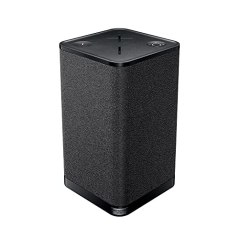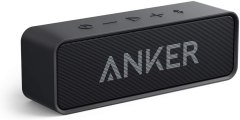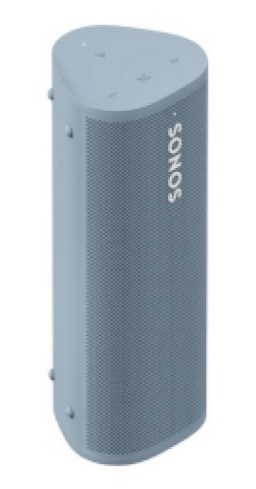Buying guide for Best portable speakers
Playing music from the small speakers on your phone isn’t the most satisfying experience when you’re enjoying a summer outing, but a portable speaker can pack a punch and give your music the rich sound it deserves.
Portable speakers connect to your devices via an auxiliary cable, Bluetooth, or both. Speakers that connect to your device with a cable limit your movement, but there’s no setup required beyond plugging in your device. Bluetooth can take some time to set up, but it allows you to keep your phone in your pocket and put your speaker nearby. The battery life and durability of portable speakers vary, so you should check the specifications to find the right speaker for your outdoor adventures.
Portable speakers range greatly in price, and some high-performance models can be something of an investment.
Key considerations
The main differences between portable speakers are connectivity and sound. Connecting your device should be straightforward and convenient, and the speaker should produce enough volume to carry a short distance outdoors.
Connection
While most of today’s portable speakers connect to devices via Bluetooth, many still include an auxiliary cable, and some use near-field communication. Many portable speakers include both Bluetooth and an auxiliary cable, which is great if several people want to play music from their devices and some have Bluetooth while others have a headphone jack.
Bluetooth: A wireless connection allows you to wander about 30 feet from your speaker, but the signal may falter as you get farther away or obstacles come between you and the speaker. Setting up a Bluetooth connection requires you to put your speaker in “pairing” mode and use your phone to search for the signal. Though Bluetooth is great when it’s working, it can be finicky, and setting up that initial connection can be challenging. Once you’ve paired the devices, connecting in the future should be easier.
Auxiliary cable: You can plug some speakers directly into your devices through a headphone jack. If your phone has a jack, you should have no problem playing whatever media you like from your speaker. If not, you’ll have to get an adapter or opt for Bluetooth instead.
- NFC: Some speakers feature near-field communication (NFC), which allows you to establish a Bluetooth connection by tapping your device against the speaker.
Sound quality
Finding specific specs of portable speakers can be difficult. The size of the speaker often corresponds to its volume and bass level. Your best bet is to read customer reviews of sound quality for the speaker you’re considering to find out how well the speaker handles highs, lows, and mids. Outdoor speakers are designed to produce loud, high-quality sound, but they don’t have the power or range of a home stereo. You want a portable speaker with enough volume to fill an outdoor area despite wind or other ambient noise.
Wattage
If the manufacturer does include tech specs, take note of the number of drivers and the combined wattage of the drivers. A speaker with a 5-watt driver is usually sufficiently loud for outdoor use, but some high-end models offer 60 watts or more.
We do in-depth research into all formats of portable speakers, including wearable, waterproof, and 360-degree models.
Battery life is one of our chief considerations when recommending the most worthwhile portable speakers to invest in.
We pay special attention to portable speakers that have an above-average bass response, which is a welcome but uncommon feature overall.
When researching the top portable speakers, extra points go to brands that offer smartphone apps with in-depth sound controls and connection options.
One principal part of our research into portable speakers includes how dependable their wireless connections are and what kind of Bluetooth codecs they support.
The top portable speakers on our list stand out because they’re loud enough to hear during all kinds of everyday tasks.
We give special consideration to portable speakers that are relatively compact but still deliver good sound across the entire spectrum.
In case you need to fill a large space with music, we look into portable speaker brands that let you connect multiple speakers to produce stereo audio at high volumes.
To make sure you can use them anywhere, we’re careful to seek out portable speakers that are durable and waterproof.
Convenient connectivity features such as one-touch NFC pairing are among the things we look for when recommending the best portable speakers
Portable speaker features
Portable speakers vary in form, durability, and controls. Though most portable speakers are fairly straightforward devices, there are still several features to consider while you shop.
Size and shape
Portable speakers range from compact devices you can slip in a pocket to large speakers that deliver impressive sound. Choosing the right sound means considering your volume needs and whether you’ll use the speaker primarily in your backyard or a larger area. A large speaker can be difficult to transport, but a smaller speaker may not deliver the sound you need.
Portable speakers may be squat discs, tall cylinders, or long bricks. If you plan to carry your speaker in your backpack, you’ll want a compact shape that packs well with your other gear.
Battery
Rechargeable lithium-ion batteries are common in portable speakers, but the time it takes to recharge them varies depending on the speaker. If you plan to use your speaker in remote locations far away from outlets, be sure to choose a model with sufficient battery life. Some of the most robust speakers boast up to 36 hours of battery life, while other models can only run for a couple of hours.
Some models also have USB ports, allowing you to charge other devices with the speaker’s battery. This can be incredibly useful while camping or hiking.
Durability
Some portable speakers are designed to be shockproof and/or waterproof. Highly durable models tend to be more expensive, but if you want to take your music with you as you battle the elements, a durable portable speaker is a must.
WiFi
Some portable speakers can connect to your home WiFi network, which typically has a greater range than a device’s Bluetooth signal. Since we’re talking about portable speaker here, this is a secondary consideration, but the ability to easily use your speaker at home can be convenient.
Controls
Volume: Most speakers have volume control built in, so you can easily adjust the volume via buttons on the speaker itself. In some cases, a speaker may have a built-in touchscreen for controlling the volume and other settings. Some models allow you to adjust the volume via your device or the speaker itself.
- Voice: A built-in microphone allows you to use a virtual assistant to control your device through your speaker. A useful feature if your device isn’t in your pocket.
Did you know?
Many portable speakers allow you to connect your device in two ways: with an auxiliary cable or wirelessly via Bluetooth.
STAFF
BestReviews
Portable speaker prices
Inexpensive
Basic portable speakers that cost from $10 to $20 are generally small in size and lack the power of larger speakers. However, durable waterproof speakers are available in this price range, and Bluetooth connectivity is common.
Mid-range
Between $20 and $50 you’ll find a variety of portable speakers that range from compact, rugged models to larger speakers with rich, powerful sound. Features like voice commands and USB charging are common at the higher end of this range.
Expensive
High-end portable speakers that cost $50 to $200 are usually fairly large and offer sound comparable to that of basic stereo systems. If you need speakers equipped for a larger outdoor gathering, this price range is your best option.
Bluetooth troubleshooting tips
Bluetooth is incredibly convenient when it’s working, but when it isn’t, it can be a headache. Here are some tips for getting the connection up and running.
Turn it off and on again. This classic tip can do wonders, and it goes for both the speaker and your device. Turning off the Bluetooth on your phone and turning it on again can also help.
Make sure your speaker is in pairing mode. Do this before trying to establish a connection.
Remove other devices from the area. Limit the number of other devices around the speaker or between your device and the speaker.
Check for compatibility. Double-check the Bluetooth versions of both your device and your speaker.
- Tap your phone against the speaker. If your phone has NFC, try tapping your phone against the speaker to establish a connection.
FAQ
Q. Can bass and treble levels be adjusted on portable speakers?
A. That depends on the model, but some more expensive speakers allow you to adjust the sound settings.
Q. Can I connect several portable speakers to one device via Bluetooth?
A. Some speakers have this feature, but this isn’t always the case. The speakers usually have to be from the same brand.
Q. Does charging interrupt the ability to play music?
A. Most portable speakers allow you to charge the speaker while it plays music.























































